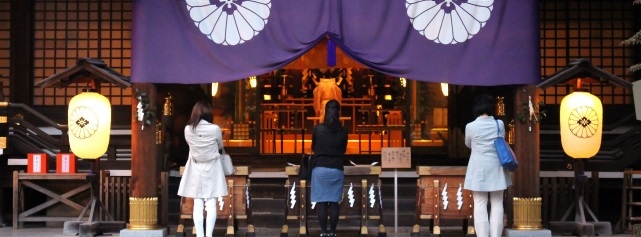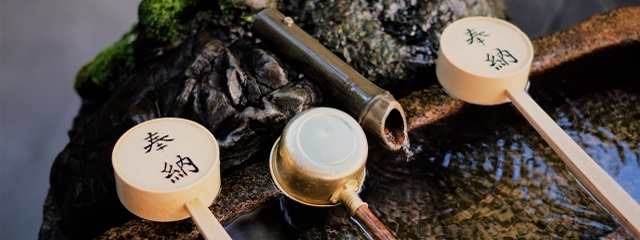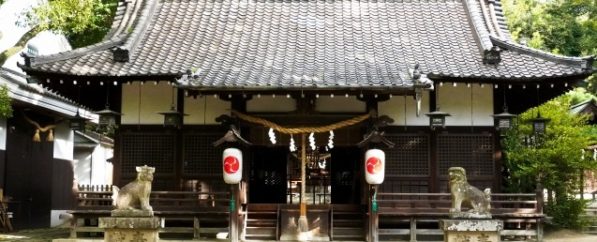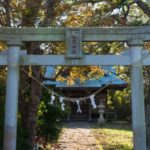Visit the deity to offer a prayer
参拝

After you have purified yourself at the temizusha, you now visit the deity to offer a prayer. “Two bows, two claps, and a bow” is the most common prayer manner at a shrine, while some shrines apply slightly different manners.
手水舎でお清めを行った後に参拝をします。神社では「二礼二拍手一礼」が最も一般的な参拝の作法ですが、一部の神社では作法が若干異なります。
① Give a little bow in front of the worship hall.
拝殿の前で軽く一礼します。
② Ring the bells loudly by tugging the rope to let the deity know you are there.
鈴緒を振り動かして鈴を力強く鳴らし、あなたが来ていることを神様に知らせます。
③ Make a money offering. Throw some money gently into the wooden offering box. The value of the offering is up to you.
賽銭を納めます。お金を賽銭箱にそっと入れましょう。賽銭の額はいくらでも構いません。
④ Perform “Two bows, two claps, and a bow.”
「二礼二拍手一礼」を行います。
Two bows: bow deeply twice to the altar, where you level your back and bend your lower back at a 90-degree angle.
二礼:神前に向かって、二回深くおじぎをします。おじぎは、背中を平らにして、腰を90度折ります。
Two claps: clap your hands twice loudly.
二拍手:音をたてて二度手を叩きます。
Put your hands together and give a prayer of thanks for our ordinary lives. Don’t forget to state your name and address, and tell the deity if you have something to ask, something to tell, or something to swear by.
手を合わせて普段の暮らしに感謝の祈りをささげます。名前と住所を伝えることを忘れずに。そして、神様に聞きたいことや伝えたいこと、神様に誓うことがあれば、伝えましょう。
One bow: bow deeply once again.
一礼:再び深くおじぎをします。
【重要な英単語・フレーズ】
Two bows, two claps, and a bow:二礼二拍手一礼
worship hall:拝殿
make a money offering:賽銭を納める
wooden offering box:賽銭箱
put your hands together:手を合わせる


